Haunted Kilburn and West Hampstead
Ghost stories associated with Kilburn and West Hampstead are rare and the phenomenon short-lived: we’ve found a couple of hoaxes, a poltergeist and an innocuous clergyman. One man thought otherwise: ‘Kilburn is the most haunted district in London’ declared Irish writer Elliott O’Donnell. He specialised in the paranormal, but today his books are generally regarded as fiction rather than fact. In his 1920 book ‘More Haunted Houses of London’, O’Donnell included ‘A haunting in a Kilburn Studio.’ The narrator talks about the importance of ‘atmosphere’, concluding that there were many reports of hauntings in low-lying districts:
‘When we come to London, there is Kilburn. There is no air there, the soil is clay, and the atmosphere is crammed as full as it can hold with stale thoughts – some of them deuced bad ones.’
After a brief mention of an un-named haunted house in Mortimer Road, the story begins in a rundown studio near ‘Kilburn Station’. An artist is visited by an apparition that allows him to see future events. But other than providing a home for the central character, Kilburn doesn’t feature any further in the action.
Spring Heeled Jack
In 1838 London was agog with the exploits of ‘Spring Heeled Jack’, a ghost or devil who attacked women and as his name suggests, could leap great heights over walls and even houses. It was said he had clawed hands and breathed fire. That April, eighteen year old James Painter decided to join in the fun. But he was caught and charged,
‘with keeping the fair inhabitants of Kilburn in considerable alarm, by sallying out upon them during their evening perambulations, disguised as a ghost.’
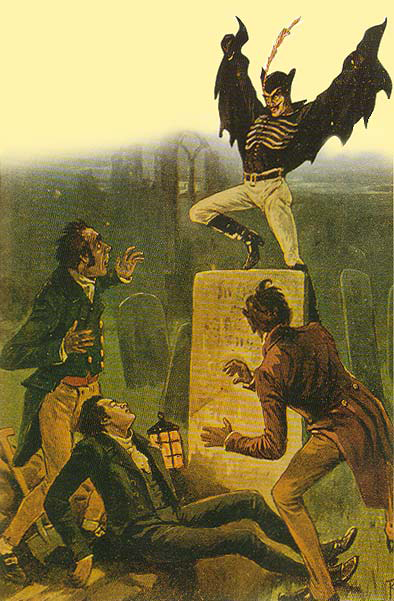 |
| Spring Heeled Jack |
James Painter was employed by Mrs Chater, a wealthy widow of 2 Waterloo Place.This was one of a group of large semi-detached villas on the Willesden side of the Edgware Road, just north of Willesden Lane. The Morning Post reported what happened to Ann Ansinck and her sister Charlotte Hagerstone:
Mrs Ann Ansinck, a respectable married lady living at Kilburn, stated that, about eight o’clock on Saturday evening, she was walking along Waterloo Place, contiguous to Mrs Chater’s residence, accompanied by a female friend, when suddenly she found herself seized by a ghostly figure, habited in a white sheet, and wearing a hideous mask, from which depended a long beard. The figure, on clasping her, explained, ‘Who the devil are you?’ and her friend having recognised the voice of the ‘ghost’ replied very promptly,
‘We’ll let you know who we are, and that we are not to be frightened by you.’
The ghost then beat a retreat, followed by the complainant and her friend, and seeing it vanish over a wall surrounding Mrs Chater’s premises, they were pretty well convinced that the defendant was the ghost. Miss Charlotte Hagerstone, Mrs Ansinck’s companion, said that she knew the defendant well. He had for a considerable period been playing his mischievous tricks upon females, some of whom he had frightened in a very serious manner. She recognised his voice the moment he spoke, and he had attempted upon several previous occasions to frighten her.
James Painter was given a £4 fine (equivalent to £300 today), and was severely reprimanded by the Magistrate:
This is a very aggravated assault and I have not the least doubt of your being the real offender. If fellows like you think they can frighten respectable females with impunity by imitating the scandalous pranks of Spring-heeled Jack, they will be convinced of their mistake by finding themselves within the walls of Newgate. It is a very serious offence and might, under particular circumstances, have caused death or other lamentable circumstances, and the public, especially the female portion of it, are much indebted to Mrs Ansinck for the spirit and courage she has displayed in bringing such an offender to justice.
The Ghost of West End House and Wilkie Collins
A benign ghostly figure of a woman was said to haunt the grounds of West End House, close to West End Green. Adeline Barnes, a resident of what was originally the small village of West End, described the apparition.
West End like many other places was not complete without its ghost story. It was supposed that some remote possessor of the property walked the carriage drive and appeared at the gates (guarding a rear entrance, near the junction of Finchley Road and West End Lane). The ghost was that of a lady of a bygone age with rustling silk skirts, without a head. Some supposed that she had been beheaded, and others that there was something hidden that she wished found out. There were many of the villagers who declared they had seen it, including Heady the postman, who said it walked to the gates and then turned and walked down the drive again. Others said it was the ghost of a lady whose children had been defrauded by a wicked guardian after her death.
Adeline concluded it was ‘more the villagers’ imagination than anything else.’ And as the entrance was only created after Finchley Road opened in 1829, why was the headless lady haunting a carriageway laid down long after her demise? But it is possible that the story prompted Wilkie Collins when he wrote The Woman in White, (1860), to describe his hero meeting a ghostly figure near the Miles property, where four roads join: ‘the road to Hampstead, along which I had returned, the road to Finchley; the road to West End and the road back to London,’ in other words, close to the present junction of West End Lane, Finchley Road and Frognal Lane.
The Reverend Ghost
In March 1893, several new papers carried the story of a ghost at 27 St Georges Road (since renamed as Priory Terrace). A reporter noted the ‘solid, substantial, comfortable-looking house’ seemed an unlikely place for a haunting, having ‘so few marks of age about it that a self-respecting ghost would hardly have been expected to regard it as an eligible residence.’ Number 27 had been built about 1861 and for some years, had been home to Ministers serving the Quex Road Wesleyan chapel.
The current occupant was the Reverent George Tyler. The imposing chapel on the corner of Kingsgate Road opened its doors in 1869 and was demolished in the early 1960s. The ghost took the form of a bearded figure of a man, ‘in black clothes of a clerical cut,’ and only appeared to the female members of the household.
Mrs Tyler and daughters Julie and Ada were convinced they’d had a supernatural experience. Nineteen year old Julie was the first to see the figure. She described how she’d gone to call her father to tea;
I saw what I took to be Pa.He neither answered or moved. I thought he was playing with me, and giving me the trouble to go up to him, and I ran up to push him. I pushed right though the figure and fell against the wall. I was dreadfully frightened but when I told the others they laughed at me.
Then her sister Ada and her mother saw the ghost. They told the reporter they disliked going into a small back room that overlooked the garden: ‘It was in that room,’ said Miss Julie, ‘that I met the figure face to face. I shall never forget his eyes – greyish blue in colour, and they seemed to look right through me quite hungrily.’
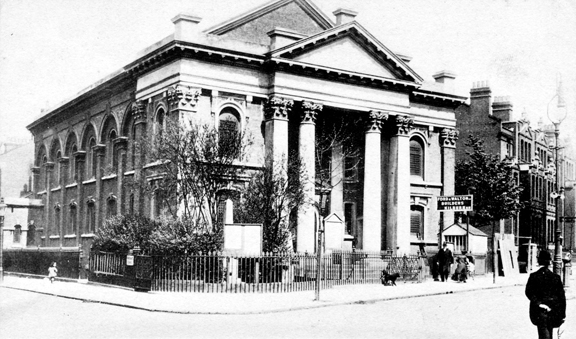 |
| Quex Road Wesleyan Chapel, demolished in the 1960s |
The ministers only served at the Kilburn chapel for a three years and the Reverend Tyler was half way through his term. The reporter felt the Reverend was doing his best to make light of the ghost story: ‘I have always been a confirmed unbeliever in spirit manifestations.’ But he agreed that after his wife and daughters told him of their experiences, he’d made some enquiries and learned that Mrs Gibson, the wife of his immediate predecessor, had some strange experiences in the house. But when he was asked if local gossip that he had taken up some floorboards at number 27 ‘in his hunt for some explanation,’ Reverend Tyler said No, he’d been looking for the source of a bad smell in the house. He left Kilburn the following year, for Derby.
A possible explanation centred on a predecessor of the Reverend Tyler who had died in the house. This was the Reverend Robert Balshaw, described in the local press as ‘a man deeply beloved by his congregation.’ He died from typhoid fever on 21 November 1877. As a young teenager Robert went to sea but after a fall from the top-mast he returned to dry land and a career as a printer. Then he became a preacher and finally a Wesleyan minister. He served in chapels up and down England, including several in London: Kentish Town, Blackheath, Chelsea, Westminster and finally Kilburn.
The Great Raymond
The old Kilburn Empire (now replaced by the Marriott Hotel), was played by many famous acts down the years. In 1919 it was the turn of the ‘Great Raymond’, billed as America’s ‘Mystery Man’, who included a séance in his act. He placed an advert in the local newspaper: ‘Haunted House wanted. £1000 is offered for a genuine Haunted House or more if the House is worth it.’ Unfortunately we don’t know if anyone replied, but Raymond was in the habit of advertising for a haunted property wherever he performed.
The Poltergeist in the Shoe Shop
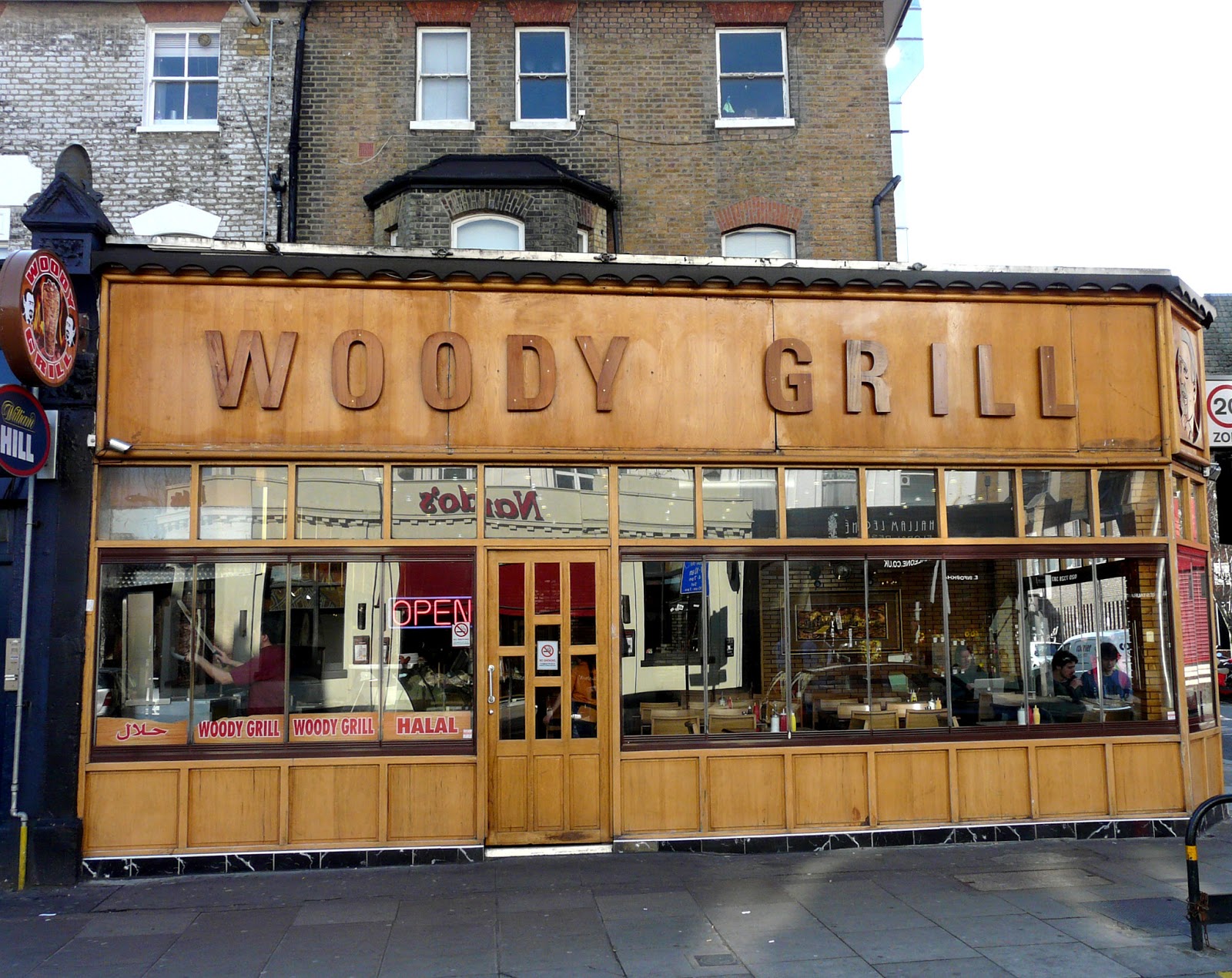.jpg) |
| 321-323 Kilburn High Road, opposite Nandos, (2013) |
The ‘American Shoe Stores’ at 321-323 Kilburn High Road, on the corner of Dyne Road, had opened in 1925 on the site of a previous boot repairers. In February 1949 the local press reported the activities of a mischievous poltergeist on the premises. Most of the incidents happened in a work room which had a separate entrance in Dyne Road. Shoe repairer Jim Best had worked there for twenty years but recent events had forced him to move to another room.
‘I have put up with all sorts of things for three weeks, but when heavy hammers start whizzing by your head; it is time to make a change.’
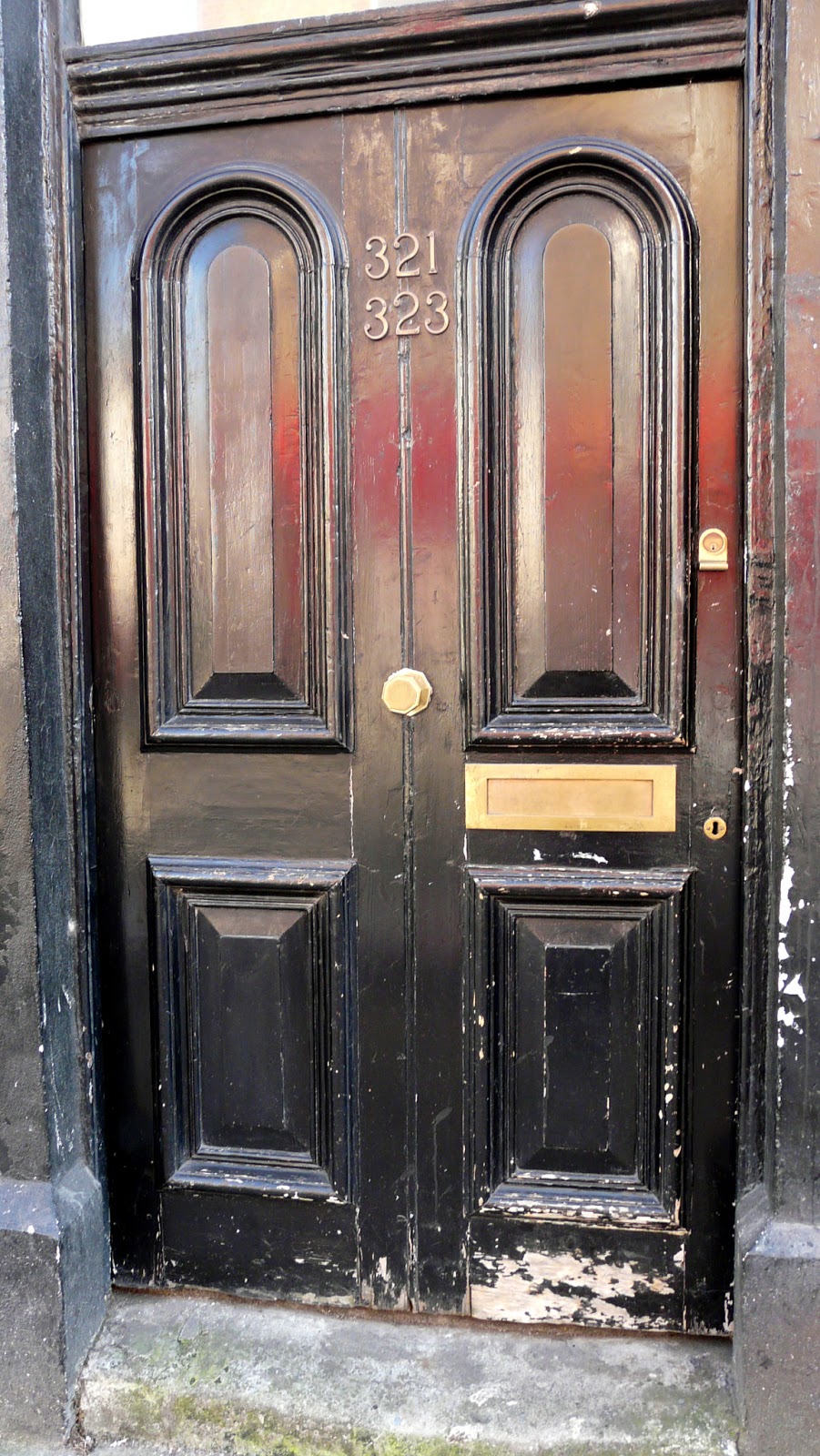 |
| Side door in Dyne Road |
The staff recounted many strange incidents: light bulbs had dropped out of their holders and stock fallen off shelves; shoes (oddly only left hand ones), were found in the road outside and brown shoes had been dyed black.
On one occasion the shop door swung open immediately after Best and his manager Charles Fishburn had locked and bolted it. Fishburn said, ‘We thought Jim was going mad but if he’s mad then we are all mad too.’ Initially Charles believed a practical joker or housebreaker was responsible, but after three weeks, concluded this was impossible.
Mr Fishburn is hoping to have the goblin’s activities scientifically investigated and would welcome the advice or help of any expert on the subject. A reporter who was invited to look over the room saw signs of damage, but there were no unusual activities in the room while he was there.
Then the disturbances at the shoe shop stopped just as suddenly as they had begun.


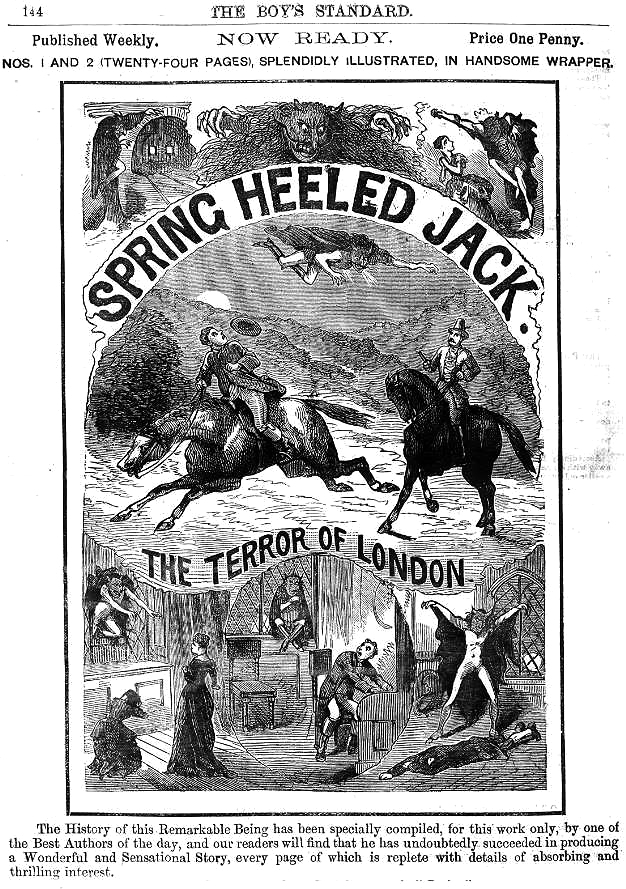

39 Dennington Park Road, a haunted house